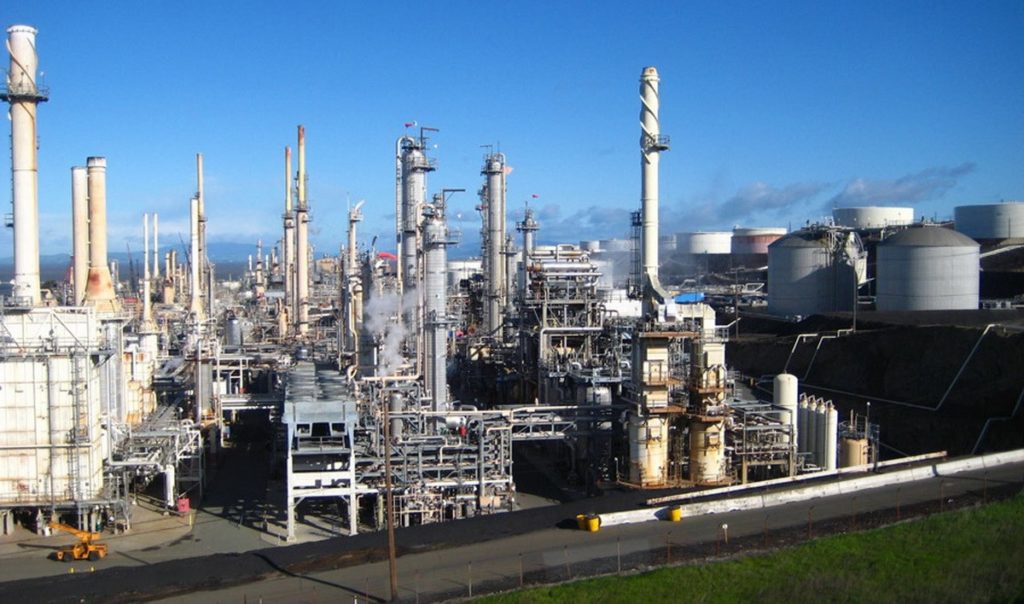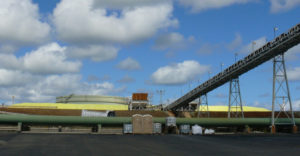
The U.S. Environmental Protection Agency issued a notice of violation to Limetree Bay on Friday for alleged violations of the Clean Air Act, for failing to operate five sulfur dioxide monitors in the surrounding communities of Christiansted on St. Croix, U.S. Virgin Islands, and a weather tower at the south shore refinery.
– Limetree Notice of Violation pdf document
This comes just a week after the EPA announced it was looking into the circumstances of recent sulfur dioxide and possible hydrogen sulfide emissions. Both are hazardous pollutants that arise from the sulfur content of crude oil.
The V.I. Department of Planning and Natural Resources reported the refinery had an “exceedance” of hydrogen sulfide emissions, while the refinery has disputed that, saying it was the less hazardous, but still poisonous pollutant sulfur dioxide.
Limetree Bay disputes EPA findings.
“EPA issued this notice of violation to protect the people who live near and work at this refinery, and we have also deployed a team of experts to St. Croix and are working to assess Limetree Bay’s compliance with environmental laws,” EPA acting Regional Administrator Walter Mugdan said in a statement on Monday. “Many residents are justifiably concerned about recent incidents at this refinery and have questioned if it is operating in accordance with requirements. In fact, the measurement of sulfur dioxide in the atmosphere is key as it helps us assess air quality, and the data are used to oversee regulated facilities to ensure that appropriate control measures are in place to reduce people’s exposure to the gas,” Mugdan said.
According to the EPA, the agency found the company has failed to operate five ambient sulfur dioxide monitoring stations, two to the west of the refinery and three to the north of the refinery, which it asserts are required by EPA regulations. The company also reportedly failed to operate a meteorological tower.
Through Limetree spokeswoman Erica Parsons, the refinery issued a statement disputing the findings.
“We strongly disagree with the claim that we are in violation of any ambient air monitoring requirement,” officials said.
“We meet all the monitoring requirements of our existing permit(s). While the PAL permit, issued in December 2020, required area monitoring that permit was withdrawn by the EPA in March before going into effect. The former refinery operator was required to perform area monitoring, but that requirement was linked exclusively to their burning of sulfur-containing residual fuel oil, which Limetree Bay does not do,” the company asserted.
The EPA’s release says a major source of air pollution, such as Limetree Bay, is subject to controls under its air permits and Limetree Bay may be liable for civil penalties and required to take actions to correct the violations.

Limetree Bay can request a video conference to discuss the notice with EPA officials. After May 30 EPA is authorized to take further actions in response to the reported violations.
According to the EPA, nearby residents of St. Croix and the neighborhoods right around the refinery are mostly lower-income and people of color who are “already disproportionately affected by environmental burdens.”
“These disproportionate burdens present environmental justice concerns, which are a priority for EPA,” the agency’s release says.
The Limetree Bay facility has experienced a series of releases and incidents that have reportedly sickened residents. Some area schools were closed temporarily as a result.
The EPA sent a team of experts, who arrived on April 30, and were joined by DPNR officials to gather information about the recent incidents and conduct a preliminary assessment of the situation.
In letters sent on April 1 and April 30, EPA requested information from Limetree Bay regarding the recent incidents at the refinery. According to the EPA, it and DPNR are “seeking to determine the level of the exceedances, the composition of the releases, the duration and cause of the incidents, the corrective actions taken or to be taken, the potential public health impacts and how to best prevent future incidents.”
In a statement released Monday by Jennifer Valiulis on behalf of the St. Croix Environmental Association, the nonprofit organization said, “These are serious violations and speak to Limetree’s apparent lack of concern over their negative impact on the St. Croix community. These sulfur dioxide monitors are critical to detecting the toxic emissions that closed schools and have been making people ill. We want to know why Limetree failed to operate these monitors. We are concerned about any other shortcuts they are taking and failures in operations. We are grateful to the EPA for examining these issues at Limetree and taking action. Further, we also think that this speaks directly to the need for independent community monitoring. We clearly cannot rely on Limetree to follow the rules for self-monitoring.”
EPA has also set in motion additional sets of inspections at the facility over the coming months.
Like many refineries, the Hovensa plant had a long history of flares, sulfurous odors and aerosol sprays of oil that impacted neighboring residents. And the Limetree plant had a large flare not long before restarting.
Details on the history of releases at the former Hovensa refinery are available on these sites:
– DPNR, Hovensa Respond to ‘Smell,’ Water Issues
– Workers Evacuated as Hovensa Tank Spews Oily Steam Cloud
– Hovensa Completes Cleanup from October Oil Spray
– Hovensa Sprays Oil For Third Time This Year
In August of 2011, Hovensa released just over one ton of hydrogen cyanide gas out of its stacks.
In 2005, the refinery released a cloud of flammable hydrogen containing trace amounts of hydrogen sulfide.
Also in 2005, the refinery released an oily steam cloud, forcing some employees to be evacuated.
In December of 2010 and January of 2011, Hovensa had two actual leaks of hydrogen sulfide.


